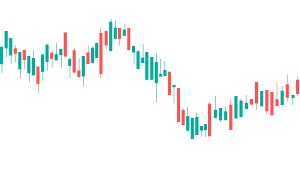RVI technical indicator was developed by Donald Dorsey in 1993 and then described in Technical Analysis of Stocks and Commodities magazine. In 1995 the indicator was transformed by the author and its updated version was used for analysis. According to Dorsey, RVI indicator is not an independent instrument of technical analysis and can be used either as filter for other indicators or instrument for pointing at the intentions but not the possibilities of price models realization.
RVIorig = 100*( EMA[W14] of U)/( EMA[W14] of S)
RVI = (RVIorig of highs + RVIorig of lows)/2, where
S = Stddev (10 days) - standard deviation for the period of 10 days;
U = S, if the current price is higher than the price of the previous period;
U = 0, if the current price is lower than the price of the previous period;
EMA (w14) = exponential moving average for the period of 14 days;
RVIorig of highs - relative volatility index of highs;
RVIorig of low - relative volatility index of lows.
The main advantage of RVI is that it is based on RSI index and considers all levels of diversification which could be omitted by RSI. However, RVI is volatile indicator but not classical oscillator that is why it is not reasonable to use it independently. As consequence, it is better to combine RVI signals with oscillator signals of technical analysis, for example, RSI indicator.
In case RSI indicator gets into oversold zone overcoming 70% together with RVI, we receive a powerful signal that the price hikes will end soon and the decrease will begin.
Also, if both RSI and RVI indicators go under 30% level, in other words get into overbought zone, it is necessary to be prepared for price surge. According to this, it is better to use a combination of these two indicators than apply them independently.
When RSI is more than 70% or less than 30% but RVI does not confirm these signals, it is better to wait till both of them will show similar picture before open a position.
Another option for applying RVI is identification of divergences and convergences with the price. If the price is going up while the index is going down, it indicates that the price will soon go down (case of divergence).
The opposite situation is also true to life: the index is falling while the price is growing which is indicative of price acceleration (case of convergence).
Forming of these signals is more relevant when RVI is in overbought or oversell zone. But even if RVI index gets into neutral zone (between 30%-70%), divergence/convergence signals will be also indicative.
Given that RVI considers a larger scale of parameters than RSI index, the signals received with the help of RVI will be much better.

RVIperiod = 14